The Military Reformers were an obscure lot when they first emerged on the national stage around 1980. There were only about a dozen of them, mostly retired officers and midlevel systems analysts from the Pentagon and the defense industry. The outside world had never heard of them. They were not even called “Reformers” yet.
Their basic message was that the US armed forces were addicted to high technology and complex weapon systems. Such weapons were so costly that relatively few could be bought. Complexity made them hard to use and maintain, leading to readiness problems and reduced sortie rates. Even worse, the Reformers said, these complicated weapons were not as effective in combat as simpler, cheaper ones.
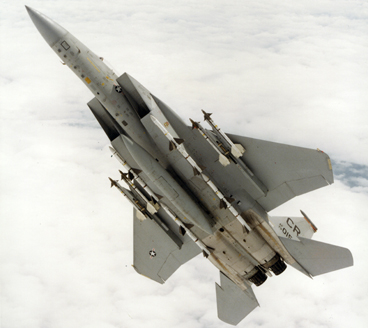 |
The Reformers took on tanks, missiles, and ships, but their primary target was tactical aircraft. In 1980, their home base was the Tactical Airpower division of the Program Analysis and Evaluation section of the Office of the Secretary of Defense. At the center of the movement were three individuals:
- John R. Boyd, retired Air Force colonel, air combat theorist, consultant to PA&E, and the spiritual leader of the Reformers.
- Pierre M. Sprey, engineer and PA&E systems analyst, who, along with Boyd, had been a key instigator of the Lightweight Fighter program in the 1970s.
- Franklin C. “Chuck” Spinney, who had worked for Boyd as a captain and followed him to PA&E. His briefing, “Defense Facts of Life,” became the manifesto of the reform movement.
These three were protected and supported by Thomas P. Christie, head of the Tac Air division. He was an ally of Boyd’s from previous days and had recruited him for PA&E.
The Reformers were adept at marketing their message to Congress and the public. Their slashing, take-no-prisoners style had great appeal for the news media. They were particularly relentless in their attack on the Air Force’s F-15 fighter, which they said was inferior to the less expensive F-16. In fact, some of the Reformers said that what the Air Force really needed was the F-5—a simple day fighter variant of the T-38 trainer aircraft—in substantial numbers.
The movement’s middleman was William S. Lind, a staffer for Sen. Gary W. Hart (D-Colo.). Lind introduced the Reformers to James M. Fallows, Washington editor of The Atlantic Monthly, who became the foremost cheerleader for the movement. Lind also helped Hart organize the Congressional Military Reform Caucus.
The Reform movement soon became a political and news media sensation. Spinney in 1983 appeared on the cover of Time. It looked for a while as if the Reformers might undermine public confidence in high-technology systems altogether. They dogged aircraft modernization programs for most of the decade, but the movement tailed off and dropped into slow gear in the 1990s.
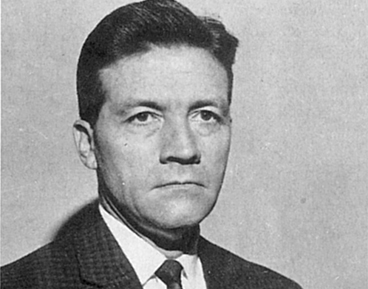 |
Retired USAF Col. John R. Boyd |
The Reformers all knew each other. By 1980, they had been cooperating behind the scenes for years and already had several victories to their credit. The movement centered on Boyd, who attracted intensely loyal followers but whose abrasive personality made him legions of enemies as well.
Boyd was a Korean War F-86 fighter pilot and later an instructor at the Fighter Weapons School, Nellis AFB, Nev., where he was called “40-Second Boyd” for the speed with which he won in air-to-air competitions. He combined his experience as a fighter pilot with physics and computer analysis to reach conclusions about the most effective design for fighter aircraft.
In the 1960s, while a graduate student at Georgia Tech and during a follow-on assignment at Eglin AFB, Fla., Boyd developed his famous Energy-Maneuverability theory of air combat. It was at Eglin that he met Christie, then a civilian weapons analyst at the Air Force Armament Laboratory.
In Korea and at Nellis, Boyd made a discovery. Harry Hillaker, Boyd’s friend and later the chief designer of the F-16, said that Boyd “found that he could gain the advantage under one set of maneuvering conditions and that his opponent could gain the advantage under another set of maneuvering conditions.” Boyd also saw that “he lost that advantage when he allowed this [aircraft’s] energy to decay to less than that of [his] opponent.” His Energy-Maneuverability theory, said Hillaker, “concluded that maneuvering for position was basically an energy problem.”
Without question, Boyd was enormously capable and intelligent but also, by all accounts, sarcastic, arrogant, intolerant, and profane. In “Genghis John,” an article for the Naval Institute’s Proceedings, Spinney described Boyd as “wildly gesticulating, loud, and irrepressible, an in-your-face type of guy, who smoked long thin stogies and blew smoke in your face, while he shouted and sprayed saliva at you in a head-on attack, from two inches, nose to nose.”
In 1966, Boyd came to the Air Staff in the Pentagon to work on the F-X project, the future F-15. The Air Force wanted an air superiority aircraft to replace the F-4, which was a multimission aircraft developed by the Navy rather than a true air superiority fighter. The F-X, as proposed, was a heavy fighter with variable-sweep wings. In Boyd’s opinion, it was too big, too clumsy, and too complex. His criticism was influential in getting the F-X redesigned. The F-15 that entered production was lighter and more agile, although not nearly as light and agile as Boyd wanted.
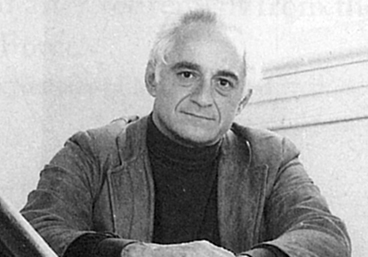 |
Pierre M. Sprey |
Whiz Kids
Boyd met Pierre Sprey in 1967. Sprey worked in the Office of the Secretary of Defense Systems Analysis shop—the “whiz kid” operation founded by Robert S. McNamara—which later became PA&E. Sprey was making waves by arguing that the important Air Force mission in Europe was close air support of ground forces and that deep interdiction was a minor mission. Sprey also had a hand in the design for the A-X, progenitor of the A-10. Boyd was not very interested in close air support, but he and Sprey got along.
Boyd and Sprey found a like-minded thinker in USAF Col. Everest E. Riccioni, who came to the Pentagon in 1969 as head of Development, Plans, and Analysis in Air Force R&D. Boyd called in Sprey to help plan a lightweight fighter that would be cheaper, smaller, and simpler than the F-15. Riccioni dubbed the advocates of the small fighter the “Fighter Mafia.” The name stuck.
In many ways, the lightweight fighter idea resembled an “Advanced Day Fighter” concept USAF considered and abandoned in the mid-1960s. The Air Force did not welcome a program that competed with the F-15, but “F-XX,” as the lightweight fighter program was designated, gained support in high places. The Air Force in 1971 issued a request for proposals to industry and in 1974 held a flyoff between two prototypes, the General Dynamics YF-16 and the Northrop YF-17. The YF-16 won.
The Air Force, however, added a ground-mapping radar and multimission capability (and weight) to the production F-16, much to the disgust of Boyd and Sprey. It would be the low element in a “High-Low Mix” of fighters, wherein the Air Force bought about two F-16s for every one F-15.
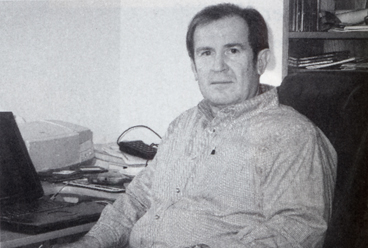 |
Franklin C. “Chuck” Spinney |
Boyd was promoted to colonel in 1971 and retired in 1975. Christie, in the meantime, had come from Eglin to head PA&E Tac Air. He hired Boyd as a consultant. Spinney also joined PA&E at this time, attracted by the chance to work again with Boyd.
The early Reform agenda was defined by three briefings:
- Boyd’s “Patterns of Conflict.” First given in 1976, it was four hours long with 160 charts. Boyd sought explanations for his experiences and observations, including the success of F-86s against MiG-15s in Korea, even though the MiG could out-turn and out-climb the F-86 in most parts of flight envelope. Part of the answer was that the F-86, with hydraulic flight controls, could transition from one maneuver to another faster than the MiG-15, which had a mechanical system. Building on these thoughts and his Energy-Maneuverability theory, Boyd developed his most famous construct, the “OODA Loop.” The weird word was an acronym for observe, orient, decide, act. “Time is the dominant parameter,” Hillaker said. “The pilot who goes through the OODA cycle in the shortest time prevails because his opponent responds to actions that have already changed.”
- Sprey’s “The Case for More Effective, Less Expensive Weapons Systems.” It arrayed “cheap winners” against “expensive losers.” The cheap winners included the F-16 and the heat-seeking, AIM-9 Sidewinder missile. Foremost among the expensive losers were the F-15 and the radar-guided AIM-7 Sparrow missile. “Not all simple, low cost weapons work, but war-winning weapons are almost always simple,” Sprey said.
- Spinney’s “Defense Facts of Life.” It was presented in 1979 and was regularly revised and updated afterward. Spinney argued that complex, high-technology weapons were making the defense program unaffordable. “The case of Air Force tactical aviation suggests that budget constraints are not the source of the problem,” he said. The problem was unnecessary complexity, which he called “a form of organizational cancer.” He also said, “Our strategy of pursuing ever-increasing technical complexity and sophistication has made high-technology solutions and combat readiness mutually exclusive.”
Soon, the Reformers went public. Christie leaked a copy of Spinney’s briefing to Congress. However, the key to getting their case to the public was Lind, who introduced them to Fallows. Fallows, who had been a speechwriter for Jimmy Carter, heaped uncritically favorable publicity on the Reformers in an October 1979 article entitled, “Muscle Bound Superpower” and subsequent articles. His influential book, National Defense, followed in January 1981. Other reporters picked up the story line.
Lind got Spinney’s briefing presented to Congressional members and staff in December 1980. Lind also gave the movement its name, “the Reformers,” which was used publicly by Hart in a Wall Street Journal column in January 1981. That summer, Hart organized the Congressional Military Reform Caucus and soon had 45 members. Among those most receptive to the message were Rep. Newt Gingrich (R-Ga.) and Rep. Richard Cheney (R-Wyo.).
After the reform movement went public, Boyd faded to the background. He was still quoted, but Spinney, Sprey, and others became the main publicists.
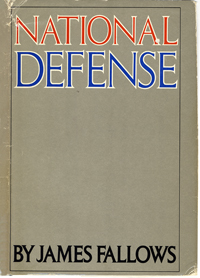 |
James Fallows’ National Defense, published in 1981, took the Reformers to a larger audience. |
In National Defense, Fallows introduced the latest ideas from Riccioni, now retired from the Air Force and employed by the Northrop Corp. Riccioni said there was a “phantom fleet”—the one that existed only on paper—and a “real fleet,” the one that could actually be put into the air at any given moment. For the same amount of money, he claimed, the Air Force could buy 1,000 F-5s or 250 F-15s, but the difference did not end there. Because complex airplanes were less reliable and often under repair, said Riccioni, the F-5 could fly 2.5 sorties a day compared to one a day for the F-15. Thus, the “real force” could be 2,500 F-5 sorties per day, compared to 250 for the F-15.
Blue Force, Red Force
The obvious catch was the huge quality difference between the F-5 and the F-15. The F-5 was a variant of a trainer, offered for sale to developing countries. The F-15 was the most advanced air superiority fighter in the world.
The Reformers parried that difficulty with a resort to a series of tests—known as AIMVAL/ACEVAL—which became a major part of the Reform story. The acronym stood for Air Intercept Missile Evaluation/Air Combat Evaluation. These tests were flown in 1977 and 1978 on an instrumented air combat maneuvering range north of Nellis. The results were scored electronically.
AIMVAL/ACEVAL featured a “Blue Force” of F-15s and Navy F-14s, all “armed” with guns and missiles, and a “Red Force” of F-5Es from the Red Flag Aggressor force at Nellis, armed with guns and the AIM-9L missile. The tests had several purposes—to assess the operational utility of five existing and proposed infrared missiles and to determine the effects of force numbers in aerial combat in various matchups.
The results could be—and were—misconstrued to say that complex weapons such as the F-15 came up short against simpler ones such as the F-5. According to the Chicago Tribune, the F-15 had been “fought to all but a draw” by the F-5. CBS proclaimed the F-15 a “turkey.” It wasn’t true, but the reporters were having too much fun to listen.
The tests were structured to explore specific questions. They simulated only part of the spectrum of air combat and were set up in a way that limited the advantages of the F-15 and amplified the capabilities of the F-5. The test scenarios were daytime visual engagements, which negated the value of the F-15’s long range and radar guided missiles. Visual identification was required. Beyond visual range (BVR) engagements were forbidden. Ground control sites—which guided the F-5s to the F-15s—could not be attacked either. Everything happened in clear weather.
Even given all that, the F-15s still were not “fought to all but a draw.” The kill ratio was 2.5 to one in favor of the F-15. The “complex” AIM-7 was responsible for the majority of the Blue Force kills.
The tests yielded valuable information. They demonstrated the value of the new all-aspect AIM-9L, an infrared missile then under evaluation. It was a “point and shoot” weapon soon adopted by the Air Force and the Navy. Another outcome was the commitment to the Advanced Medium-Range Air-to-Air Missile (AMRAAM).
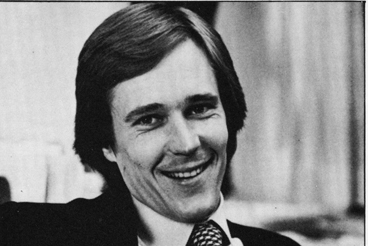 |
James Fallows, Washington editor of The Atlantic Monthly. |
The Reform program flowed from a limited view of the roles and requirements of airpower. It assumed that visual dogfighting in clear weather would dominate aerial combat. Engagement beyond visual range was neither needed—or wanted. The BVR avionics added weight and the radar functioned as a beacon, giving away the advantage of surprise and attracting an enemy attack.
In their 1986 book, America Can Win: The Case for Military Reform, Hart and Lind repeated the Reformers’ conviction that radar missiles “have consistently performed poorly in combat.” In Vietnam, they said, “our primary radar guided missile, the Sparrow, had a probability of kill (Pk) of just .08 to .10; we had to fire more than 10 Sparrows for each hit. In contrast, the infrared Sidewinder had a probability of kill of .19, and guns had a Pk of .24.”
In fact, neither missile was very accurate in Vietnam. In depicting the “simple” AIM-9 Sidewinder as good and the “complex” AIM-7 Sparrow as bad, the Reformers did not tell the complete story. It was becoming a habit of theirs.
Of USAF’s confirmed fighter victories in Vietnam, 50 were achieved with Sparrows, 33 with Sidewinders, and 41 with the gun. The three top aces in Vietnam achieved 12 of their total of 16 kills with the AIM-7. The Sparrow, in the improved AIM-7M model, continued in service for many years. It gave good service in the Gulf War, although the Pk was still less than 40 percent.
As soon as US fighters crossed the border into North Vietnam, they were picked up and tracked constantly by ground radar. There was little surprise left to be lost by the use of radar missiles. The great majority of US losses in Vietnam were not in dogfights with MiGs but rather to radar-controlled anti-aircraft artillery and SAMs.
The Reformers saw a need for air-to-air capability. They liked what airpower did in support of ground forces. However, they didn’t see much importance in long-range power projection. To Hart, the value of independent bombing was “a myth.” Fallows conceded the critical impact of the atomic bombings of Japan in 1945. Beyond those two instances, he said, “It is hard to make a serious argument that deep interdiction bombing, far from the battlefield, has ever had a significant military effect.”
Sprey (wrote Fallows) thought that the Air Force should not build another big bomber like the B-52 or B-1. It should go for something such as the A-1 attack aircraft, small and maneuverable, that could fly low along riverbeds and up canyons to avoid radar detection.
The Reform vision was perfectly suited to an imaginary war in which aerobatic fighters dueled in clear skies on sunny days. That war would never exist. In Europe, the Western allies faced a Soviet-led Warsaw Pact force that was superior in numbers and arrayed in depth across a broad front. Without an allied capability for interdiction and deep attack, the enemy would be free to mass in the rear echelons and reinforce the front. Supplies and reinforcements would move unimpeded by road and rail, and enemy air bases would stay in operation.
Furthermore, the Soviet Air Force was built to conduct BVR engagements. “Day-visual” restrictions would be crippling to allied air forces. In Central Europe in midwinter, airmen could count on no more than three flying hours a day in which lighting and weather conditions would allow visibility of more than 3.5 miles.
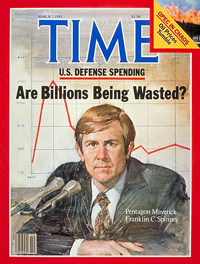 |
Spinney’s briefing landed him on the cover of Time magazine. |
Among the Air Staff officers who responded to the freewheeling notions of the Reformers was Lt. Col. Walter Kross—a future four-star general—who explained that “in NATO and elsewhere, first priority will be given to destroying enemy aircraft ingressing at low altitude to bomb critically important targets. The US must be able to defend against such attacks—day or night, regardless of the weather.” It would be a disaster, Kross said, to “run the risk of forfeiting first-shot advantage to a numerically superior enemy.” Kross said, “Worse, it would establish yet another sanctuary for Soviet planners to exploit: the entire air combat envelope beyond visual range—be it on a clear day, dark night, or in poor weather.”
Weapons That Will Work
The Reformers, using the Carter defense program as their baseline, mistakenly attributed the readiness and supportability problems to weapons complexity. They passed lightly over the notorious “hollow force” phenomenon in which underfunded units fed upon themselves. Nor did they factor in the 1973-81 oil crisis, in which the price of jet fuel increased tenfold.
“The Reformers who focused on money saw the F-15 as too expensive at $20 million, seven times the cost of an F-4 and 20 times the cost of an F-5,” said Clarence R. Anderegg, a veteran fighter pilot and now historian of the Air Force, in Sierra Hotel: Flying Air Force Fighters in the Decade After Vietnam. “They further argued that the airplane was so big and easy to see that the pilot of a small F-5-sized fighter could easily get inside the F-15 pilot’s OODA loop and wreak havoc. Ironically, the very argument the Reformers used proved the case against them. The Eagle was big, but its radar and superb missiles not only gave the F-15 pilot the first chance to observe, orient, and decide, they also give him the first chance to act.”
The year 1982 brought the unveiling of a second Spinney briefing—“The Plans/Reality Mismatch.” His new theme was that US weapons acquisition policy was driving a wedge between resources and requirements. It was a briefing that got him on the cover of Time and that brought new fame to the Reformers. Time proclaimed that “the reform movement has attempted to focus attention on … weapons that will work.” Within weeks of the Time cover story, Spinney was called to give his briefing to four Congressional committees.
It was high tide for the Reformers. Also in 1983, Gary Hart sought to force the cancellation of a host of programs, including the F-15, improved versions of the F-16, the radar guided AMRAAM missile, the LANTIRN night targeting system, and an infrared version of the Maverick ground-attack missile. The effort failed, but Reformism was rippling through Washington.
The Reformers, though they focused on the Air Force’s tactical airpower, also targeted some Army and Navy systems. One of Sprey’s “expensive losers” was the M1 tank. The older M60 was cheaper and more effective, he said. Dina L. Rasor, founder of the Project on Military Procurement, picked up the campaign. In 1981, she accompanied a Congressional delegation to Ft. Hood, Tex., to see the M1. When she got into the tank, she discovered the Army had provided insufficient crew space. At 5 foot 6 inches, she said, she almost couldn’t squeeze into the driver’s seat herself. “I had the same problem until I adjusted the seat,” said Fred Reed, who checked out the M1 for an article in the Washington Post.
In their 1986 book, Hart and Lind claimed that the day of the large aircraft carrier had passed. Nuclear submarines and powerful anti-ship missiles had made carriers anachronisms, they said. What the US Navy really needed was more submarines and about 40 “high adaptability surface combatants,” which could serve as small carriers and in other roles.
In 1987, Hart left the Senate to run for president but dropped out of the race when caught with a woman, not his wife, aboard the yacht Monkey Business. Hart continued to send in Reform ideas from the sidelines. In 1989, he said the B-2 bomber “has been made obsolete by new political realities,” a judgment that would be demolished in the air war over Serbia in 1999.
In the late 1980s, the Reformers wound up in the curious position of opposing the F-16. They were promoting the “Combined Arms Fighter,” also called the “Mudfighter,” a close air support airplane that would be even more austere than the A-10, but with a 30 mm to 40 mm anti-tank cannon. The initiative failed.
Through the 1980s and into the 1990s, Boyd continued to develop and present briefings. He appeared at Air University, the Army War College, and elsewhere, but found his greatest reception and greatest respect from the US Marine Corps. Boyd parted ways with the Congressional Reform Caucus, regarding its members as insufficiently aggressive in supporting the cause.
What really took the ginger out of the Reform movement was the Gulf War. In that war, high technology undeniably worked. Its star performers included the much-maligned F-15 and all of the other systems that had been attacked by the Reformers.
Of the 40 USAF aerial victories, 33 were by F-15s. As for weapons used, 23 of the victories were by AIM-7Ms, five were by AIM-9Ms, and only two were with guns. Three were by air combat maneuvering, and one was by an F-15E firing a GBU-10 at a helicopter. The F-16 also did well. It flew more Desert Storm missions than any other aircraft type.
Many argued that the Gulf War was a preview of future conflicts and of a Revolution in Military Affairs, consisting of stealth, precision munitions, and information superiority. Chuck Spinney was having none of that. “At the core of the RMA is a radical hypothesis that would cause Sun Tzu, Clausewitz, and George Patton to roll over in their graves,” he said.
The F-15’s record book is not yet complete, but thus far, it has put together a victory tally of 104 to zero. Flown in combat by the US Air Force, the Israeli Air Force, and the Royal Saudi Air Force, the fighter has never been defeated in combat.
In 2004, David R. Mets of Air University noted that Air Force F-15s had killed 59 targets—all of them with air-to-air missiles. Moreover, said Mets, “Air Force F-16s had killed seven—none of them with the fine M61 gun.” The Viper, Mets went on, “has seen its effectiveness greatly enhanced by the addition of the Advanced Medium-Range Air-to-Air Missile (AMRAAM), which gives most F-16s a beyond visual range (BRVR) capability for the first time.” The F-16 also used updated Sidewinder missiles.
“The Korea-style dogfight seems to have all but disappeared from the air-to-air battle,” Mets concluded. “The agility of both aircraft [the F-15 and F-16] remains highly useful in dodging surface-to-air missiles, but that is not what Boyd and the acolytes had in mind.”
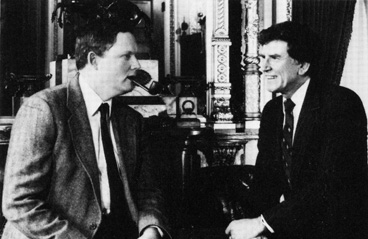 |
William Lind (l) and Sen. Gary Hart (r) worked in tandem to promote the Reform agenda. |
Where Are They Now
The Reformers have since turned their scorn on the F-15’s replacement, the F-22, often with arguments similar to those leveled at the F-15 many years ago. Familiar faces from the Reform era still pop up with some regularity.
Bill Lind gained the spotlight briefly following the Sept. 11 terror attacks when he declared in March 2002 that “within 48 hours, we should have wiped Taliban-held Afghanistan off the map, using nuclear weapons.”
Dina Rasor, founder of the Project on Military Procurement and foe of the M1 tank, started a new organization, the Project on Government Oversight, also known as POGO.
Everest Riccioni regularly takes part in POGO activities. At a press briefing in 2000, he said the F-22 was “conceived for a mission that no longer exists, and is totally irrelevant to modern warfare.” On the POGO blog in 2005, Riccioni said the F-22 “represents no progress over the 30-year-old F-15C” and that the unit cost was “obscene.”
Pierre Sprey left the Pentagon in 1986 because “it would be impossible to build another honest aircraft.” He formed a music publishing business and records blues, gospel, jazz, and other music on his own label. In recent years, he has been an advisor to the Center for Defense Information, an organization that routinely opposes Pentagon programs. In August 2007, Sprey told Cybercast News Service that “the F-16, as it was in 1986, can whip today’s F-22. You’d think the F-22 would be able to whip some antique.”
The Reformers’ star has declined, but not Boyd’s. In the years since his death in 1997, there has been a resurgence of interest in his work. Two highly favorable biographies have been published, dozens of pro-Boyd articles have appeared in magazines and military journals, and countless Internet postings overflow with praise for him. The Boyd legend is still growing.
Two of the Reformers persisted for years in the Pentagon. Christie moved up the DOD ladder, spent nine years on the senior staff at the Institute for Defense Analyses, and returned to serve as director of Operational Test and Evaluation from 2001 to March 2006.
Spinney’s allies in Congress provided him enough cover to block efforts to oust him. He continued at PA&E and published his criticisms in a series of some 500 “E-mail Blasters” on the Internet. Among those with whom he exchanged unfriendly words were Air Force Magazine and its editor, which at the time was me. In E-Mail Blaster #381 (Aug. 20, 2000), Spinney circulated a chart that showed the current defense budget as almost five times the size of the budget during the Vietnam War. Air Force Magazine pointed out in an editorial that Spinney reached this conclusion by ignoring the effects of 525 percent cumulative inflation since 1968.
Spinney, enraged, struck back. In Blaster #391 Oct. 11, 2000, he (1) declared the editorial “intellectual slime,” (2) said the editor was an “ignoramus,” (3) said he had taken note of the inflation offset in a different article published elsewhere, and (4) that it did not matter anyway since the effect of 525 percent inflation did not change his conclusion—that spending four percent of GDP on defense “would be tantamount to a declaration of total war on Social Security and Medicare.”
Spinney retired in 2003 and received POGO’s “Good Government Award” for all he had done. Today, there is not much left of the Military Reform Movement except for residual noise.
John T. Correll was editor in chief of Air Force Magazine for 18 years and is now a contributing editor. His most recent article, “Tet,” appeared in the January issue.